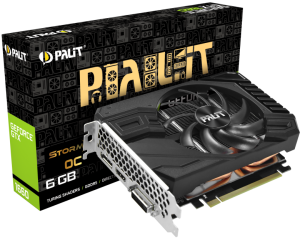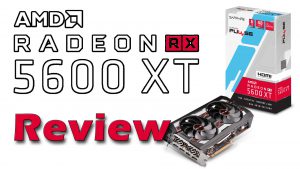
But now let’s go to the other main component of the gaming PC. AMD announced their new Navi 10 graphics processors, first of the new RDNA generation. RDNA is really a new and ground-up design and not an derivate of GCN. The main difference is that AMD changed the wavefront size (that is the smallest group of data fragments that can be processed) form 64 to 32 elements that has not been changed in my knowledge from at least the times of Radeon HD 2900X. That also leads to a redesign of the compute unit, which still has 64 ALU’s and 4 texturing units, like in GCN, however the ALU’s are now organized in 2 vector units if 32 elements, instead of 4 groups of 16. I won’t bother you with more of the deep stuff, let’s go for the cards. There are 2 main models and one AMD specific (think similar to Nvidia’s Founders Editions).

First we have Radeon RX 5700XT, which has 40 CU or 2560 ALUs/shaders and 160 texturing units. The GPU also has 64 ROPs and 256-bit bus to GDDR6 memory with 14 Gbps speed and 8 GB size. The clocks speeds are 1605 MHz base, 1755 MHz typical gaming and 1905 MHz max boost. The TDP is 225 W and the card uses one 6-pin and one 8-pin PCI express power connector. The reference design still uses the same axial (or as some call it “turbine”) desing with a big avapor chamber radiator under the shroud. The later is all aluminum and is optimized for cooling and silence. Still we need to see what are the results. And now for the not so good news – the price AMD has set is $449, or 10% under the base price for GeForce RTX2070. AMD gave us some results from internal testing, which give slight (around 6%), though not uniform, performance lead for Radeon RX 5700XT. Also they’ve demonstrated the performance in World War Z, where the new adapter was around 15% faster. We also have the data point from Computex, where AMD demonstrated around 10% lead in Strange Brigade. One interesting point to note was that the results from AMD were as they’ve said “in the best API for the adapter” which implies that in some games the graphics adapters might have been tested in different API’s, for example on in DX11 and another in Vulkan, so it is not exactly apples to apples comparison. So take it with a grain of salt, like any time you see “official” benchmarks.

The second adapter is Radeon RX 5700, sans the XT moniker. It has 36 compute units, or the now quite well known 2304 ALU’s and 144 texturing modules and it keeps the same ROPs and memory configurations. The clocks are lower at 1465 MHz base, 1625 MHz gaming and 1725 MHz max boost. The TDP is also lower, 180 W. In the internal AMD comparison the new adapter is around 10% faster than GeForce RTX 2060, and this time it was an universal win. However the price is also higher at $379.
Of course both graphics adapters will use the new PCI Express 4.0 interface, though at the present time it is not expected to give them anything substantial in therms of performance. And of cource they’ll work on all the PCI Express 3.0 and older mother boards.

The last model that AMD announced was Radeon RX 5700XT 50th Anniversary Edition. It’s mostly slightly overclocked RX 5700Xt with 75 MHz higher clockes, 10W higdher TDP, fancier colour design and Lisa Su’s signature. That is for “only” $499 and can only be bough through AMD’s own website.
Also the buyers of the new cards will get 3 months of Xbox Game Pass, where they can play Gears 5 and another more than 100 games. That game bundle will also be applicable for select Ryzen processors.



